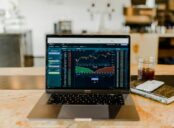Day Trading: The Ultimate Guide to Successful Trading

Introduction:
Day trading has gained immense popularity in recent years as more and more individuals seek to make profits in the financial markets. This article provides a comprehensive overview of day trading, exploring its different types, popular strategies, and quantitative measurements. Additionally, it will discuss the differences between various day trading approaches and provide a historical analysis of the advantages and disadvantages associated with each.
I. What is Day Trading?
Day trading refers to the practice of buying and selling financial instruments within the same trading day, with the aim of profiting from short-term price fluctuations. Unlike long-term investing, day traders do not hold their positions overnight, which allows them to take advantage of intraday market movements.
II. Types of Day Trading and Popular Strategies:

a) Scalping: One common approach to day trading is scalping, where traders execute multiple trades throughout the day to profit from small price movements. Scalpers target highly liquid stocks or currency pairs, aiming to make quick profits from rapid price fluctuations.
b) Momentum Trading: Momentum traders focus on stocks or other assets experiencing significant price movements. These traders aim to capitalize on the momentum and ride the trend until signs of reversal appear. Momentum trading is particularly popular among day traders due to its potential for quick gains.
c) Breakout Trading: Breakout traders identify key levels of support or resistance and enter trades when the price breaks through these levels. This strategy aims to capture significant price movements as the asset breaks out of its consolidation phase.
III. Quantitative Measurements in Day Trading:
Successful day traders rely on quantitative measurements to evaluate potential trades and manage risk. These measurements include:
a) Average True Range (ATR): ATR calculates the average range between the high and low prices of an asset over a specified period. Day traders utilize ATR to determine the potential profit targets and stop-loss levels based on market volatility.
b) Volume Analysis: Volume analysis provides insights into the level of market participation and the strength of price movements. By analyzing trading volume, day traders can gauge the sustainability of a price trend and make informed decisions.
c) Technical Indicators: Various technical indicators, such as moving averages, MACD, and RSI, help day traders identify trends, momentum, and overbought/oversold conditions. These indicators serve as valuable tools in formulating trading strategies and timing entry and exit points.
IV. Differences in Day Trading Approaches:
Day trading approaches can vary significantly based on timeframes, asset classes, and trading styles. Some traders focus on specific sectors, such as commodities or cryptocurrencies, while others specialize in a particular market, such as forex or stocks. Furthermore, day traders may adopt different styles, such as discretionary trading or algorithmic trading, depending on their preferences and expertise.
V. Historical Overview of Pros and Cons:
a) Advantages of Day Trading:
– Potential for quick profits: Day trading allows traders to capture short-term market movements and potentially make profits within a single trading day.
– Flexibility: Day traders can choose when and how long to trade, providing flexibility for those with other commitments.
– Skill-based activity: Day trading requires continuous learning, analysis, and decision-making, providing an opportunity to develop valuable trading skills.
b) Disadvantages of Day Trading:
– High risk: Due to the nature of short-term trading, day traders face higher risks compared to long-term investors.
– Emotional stress: Day trading involves making quick decisions under pressure, which can lead to emotional stress and potentially irrational trading behavior.
– Transaction costs: Frequent buying and selling of stocks or other assets result in higher transaction costs, reducing overall profitability.
In conclusion, day trading offers individuals the opportunity to profit from short-term market movements. By understanding various types of day trading, employing quantitative measurements, and recognizing historical advantages and disadvantages, traders can approach this practice with the knowledge and skills necessary for success.





















